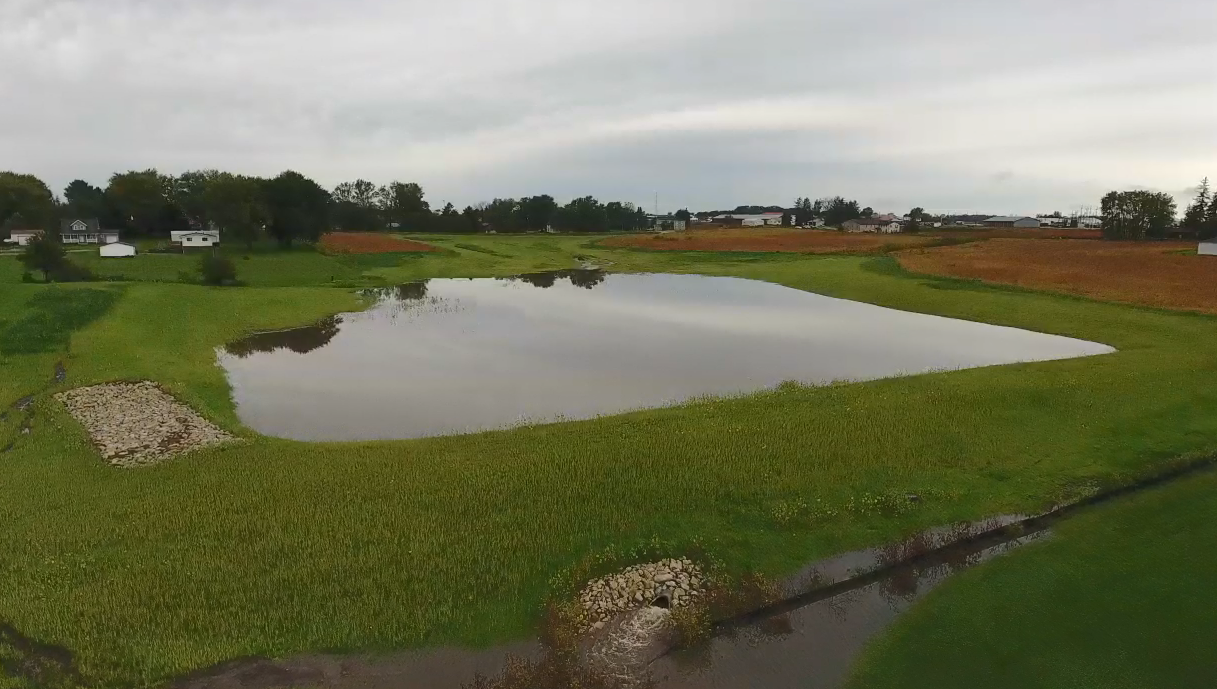The successful implementation of the Illinois Nutrient Loss Reduction Strategy has reduced nutrient loss across the agriculture, point source and urban stormwater sectors.
Nutrient runoff in Illinois waterways contributes to eutrophication, which eventually makes its way to the Gulf of Mexico, creating dead zones. These zones have low oxygen and cannot support the aquatic ecosystem.
The Illinois Nutrient Loss Reduction Strategy (NLRS) is a collaborative effort across the state to limit the amount of nutrients, particularly nitrogen and phosphorus, entering the waterways. The strategy aims for a 45% reduction in total phosphorus and nitrate-nitrogen loads originating in Illinois. The 2023 biennial report details the statewide efforts to reduce nutrient loss from agricultural, point source and urban stormwater sectors.
Below are examples of successful Illinois NLRS implementation efforts. When it's time to reduce nutrient loss and improve water quality, streamline the process and optimize the results by partnering with Fehr Graham's experienced professionals.
Successful implementations of the Illinois Nutrient Loss Reduction Strategy
The agriculture, point source and urban stormwater sectors are crucial in reducing nutrient loss. The following table highlights successful implementations of the Illinois NLRS.
|
Illinois nutrient loss reduction strategy: Successful implementation efforts
|
|
Nonpoint sources
The agricultural sector is the primary nonpoint source of nutrient loss via surface runoff and subsurface drainage. Agriculture conservation projects kept nitrogen and phosphorus -- 73,000 pounds and 30,000 pounds, respectively – out of waterways.
Successful implementation efforts include:
- Cover crops and reduced tillage.
-
The NLRS survey shows farmers are knowledgeable about cover crops and use the maximum return to nitrogen (MRTN) method to determine nitrogen fertilization rates.
-
In 2021, 1.39 million acres were dedicated to cover crops in Illinois.
-
Conservation tillage is practiced on nearly three-quarters of cropland, helping reduce soil loss and limiting the incorporation phosphorus fertilizer and manure into the soil.
- Edge-of-field practices.
-
In 2022, agricultural organizations sponsored more events discussing edge-of-field practices, such as bioreactors, wetlands, saturated buffers and stream buffers.
-
In 2022, water and sediment control basins were added as a recommended practice, which can lead to a 60% reduction in total phosphorus.
-
Grass buffers line 52.7% of rivers near Illinois croplands.
- Collaboration between farmers and agencies.
-
Between 2021 and 2022, more than 940 outreach events on nutrient loss were organized and attended by over 110,000 participants — the highest participation reported since 2015.
-
It is reported that 55% of surveyed farmers know about the NLRS strategy, an increase from 43% in 2020.
-
The survey highlighted a rise in fertilization practices' adoption rates for the 11 million acres of corn planted in 2021. In 2021, 76% of corn acres used the MRTN rate.
|
|
Point sources
By 2022, the point source sector exceeded the strategy’s 25% interim total phosphorus reduction goal for 2025. The Illinois Environmental Protection Agency’s (IEPA) National Pollutant Discharge Elimination System (NPDES) permit program has helped reduce phosphorus discharges by 6.2 million pounds, a 34% decline since 2011.
- Wastewater treatment plant upgrades.
-
In 2022, 101 major municipal facilities discharged an annual average phosphorus concentration of 1 mg/L or less. Of these facilities, 46 meet phosphorus discharge limits of 0.5 mg/L or less.
-
In Illinois, 38% of all major municipal wastewater treatment plants now have permit limits of 1 mg/L total phosphorus.
-
Facilities have also developed and submitted 210 nutrient reduction optimization studies and nutrient reduction feasibility studies since 2018.
- Watershed-based approaches.
-
Sixty-seven major municipal wastewater facilities are developing Nutrient Assessment Reduction Plans (NARPs) for phosphorus reduction. Another 89 are developing NARPs as part of a watershed group.
-
Since 2011, 143 watershed-based plans have been developed with cost-share funding from the Illinois EPA.
-
Facilities have also developed and submitted 210 nutrient reduction optimization studies and nutrient reduction feasibility studies since 2018.
|
|
Urban stormwater sector
In 2021-2022, an additional 14 urban stormwater best management practices were installed, which reduced total nitrogen by 4,192 pounds and total phosphorus by 1,033 pounds.
- Green infrastructure projects.
-
Eleven Illinois EPA Green Infrastructure Grant-funded projects prevented 1.2 million gallons of stormwater from entering waterways.
-
A new Green Infrastructure Inventory Tool maps the location and type of almost 2,000 stormwater best management practices across the state.
- Stormwater management practices
|
Even with these successful implementation efforts, nutrient levels in Illinois waterways continued to increase in 2021 and 2022 compared to baseline measurements. As a result, more streamlined efforts are needed across communities to achieve strategy goals.
Fehr Graham can help with successful implementation of the nutrient reduction strategy
At Fehr Graham, we provide cost-effective solutions and technical guidance on NARP implementation to optimize nutrient reduction efforts. We also help communities secure funding for NLRS strategy implementation and stakeholder agreement. From helping your community comply with MS4 permit requirements to ensuring clean stormwater systems to effective nutrient removal in small wastewater treatment plants, we develop and execute comprehensive nutrient loss reduction strategies.
To learn about how Fehr Graham can help you with implementing nutrient reduction strategy, contact us or call 630.897.4651.
 |
Karoline's creditials PhD, PE, PMP, CFM is a powerhouse in water resources engineering. She specializes in watershed, water quality, hydrodynamic modeling, regulatory permits, nutrient criteria development, watershed planning and stormwater management. Her groundbreaking research, particularly at the interface of environmental engineering and ecology, has revolutionized our understanding of urban streams. Reach her at This email address is being protected from spambots. You need JavaScript enabled to view it.. |


